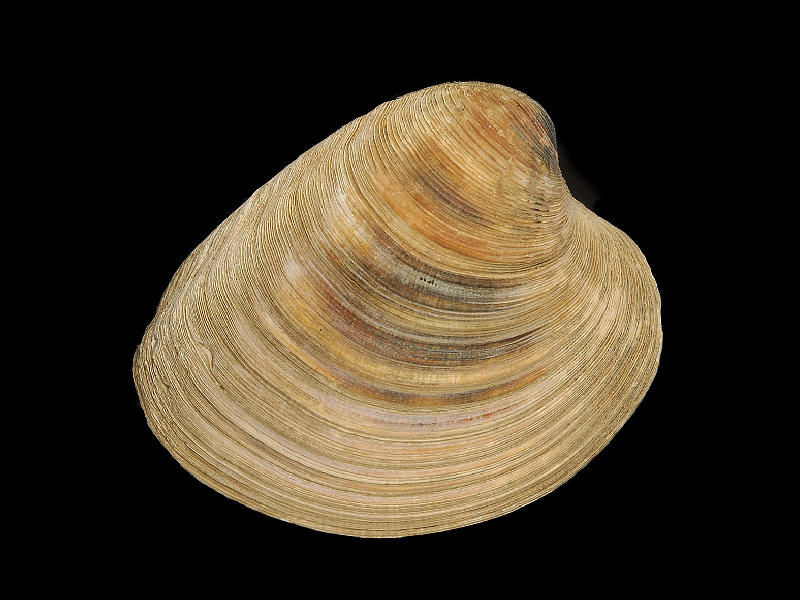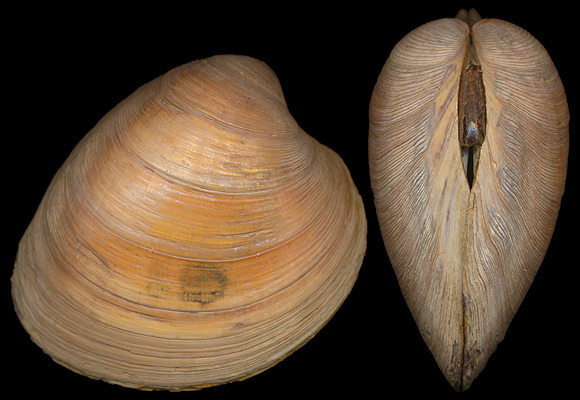

Common names for Clam, hardshell, quahog
Hardshell clam, quahog
Other languages for Clam, hardshell, quahog
- French name: Praire
- Italian name: Vongola dura
- German name: Venusmuschel
Introduction to Clam, hardshell, quahog
These clams are rarely sold as «hardshell» or «quahog,» but rather by their size (1 1/2 to 5 inches), which ranges from littlenecks to cherrystones, topnecks, and chowders. On the West Coast, Manila clams and Washington steamer clams are occasionally referred to as littlenecks, despite the fact that they are not members of this hardshell family. Hardshells are the most valuable clam species in the United States, being sold mostly live in bags. Clams grow at a snail’s pace. The tenderest, most expensive, and most sought-after littlenecks are between two and three years old. Cherry-stones are between five and six years old. Large chowder clams can live for up to 30 years. Hardshells are found in bays, coves, and salty estuaries from the Canadian Maritimes to the Gulf of Mexico. The majority of the harvest in the United States occurs between Massachusetts and Florida. Harvesting of the clams is done using scissors-like tongs with wire-mesh bottoms, as well as with hand rakes and hydraulic dredges. Additionally, they are grown on farms throughout the East Coast.
Product profile for Clam, hardshell, quahog
Connoisseurs like hardshells for raw, halfshell clams. They have a mild, sweet, and briny flavor. Hardshells that have been cooked are soft, juicy, and mild. Tender-crisp and plump raw meat should range in color from white to golden yellow, with some dark regions. Meat that has been cooked is light pinkish-white in color. The shell of a hardshell is off-white, round, and symmetrical, with a purple or violet border on the interior. Clams with open or cracked shells should be discarded. Hardshell clams, unlike softshells, can seal their shells entirely and «live on their own fluids» for a period of time, giving them a longer shelf life out of the water.
Cooking tips for Clam, hardshell, quahog
Littlenecks can be eaten raw on the halfshell, fried, or steamed. At the simmering stage of the soup, add the minced clams, soak for 5 minutes, and serve. Cherrystones can be eaten raw, although they’re most commonly grilled, diced for chowder, or baked in clams casino recipes. Large hardshells are packed or used in clam cakes, chowders, and other cuisines. After thawing, whole frozen clams must be served right away. Bacteria develop quickly if they are allowed to warm up.
Nutrition facts for Clam, hardshell, quahog
Calories: 74 Fat Calories: 8 Total Fat: 0.9 g Saturated Fat: 0.2 g Cholesterol: 34 mg Sodium: 56 mg Protein: 12.7 g Omega 3: 0.2 g
Primary product forms for Clam, hardshell, quahog
Live Fresh: Meats Frozen: IQF halfshell, Whole, Meats Value-added: Canned, Stuffed, Cakes
Global supply for Clam, hardshell, quahog
Canada, United States, Iran